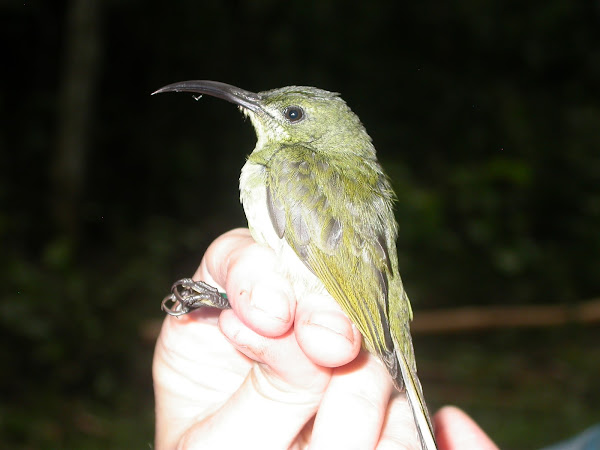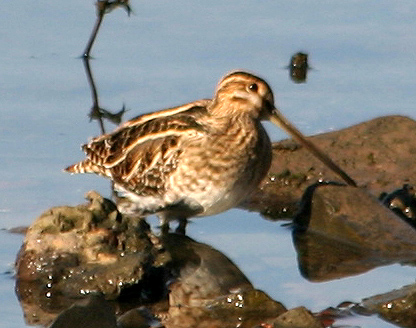Numerous members of the order Gruiformes have an appearance and behavior that are seemingly similar to those of the order Ciconiiformes. Cranes, for example, have long legs and powerful, spearlike beaks. Two species are found in North America; the others are mostly found in Europe and Asia. The drab-colored limpkin (Aramus guarauna) is the solitary member of the Aramidae family. It is distinguished by its long legs and drooping beak. Certain rails, such as the grey-necked wood rail, have lengthy legs in comparison to their compressed bodies and long, thick bills; other members of the Rallidae family have small bills.
14 of 15 Atlantic Puffin Sir Francis Canker Photography / Getty Images The Atlantic puffin's bright red-and-black stripes on its beak earned it the titles "clown of the sea" and "sea parrot." However, the distinctive color pattern on its beak is just the beginning of what makes this beak so unique. Serrations on the upper jaw enable the puffin to carry more than ten fish at a time by pressing them against the serrations.
The Goliath Heron is the world's biggest living heron. It is a very aquatic species that seldom goes far from a body of water, preferring to fly along streams rather than across land. It is normally seen foraging in shallow water, but has also been reported hunting in deep water over thick vegetation. They are solitary foragers that are quite territorial against other herons. Their prey is nearly completely composed of quite big fish, and they capture only around two or three every day. Additionally, they utilize their long and pointed beak to consume various tiny creatures they encounter, such as frogs, lizards, and snakes.
The rhinoceros hornbill is a large and friendly bird that inhabits Asia's rainforests. They are always found in trees. This bird has an extraordinary beak. A casque is a feature on the tip of its beak. The casque, which has an upward curve like a rhino horn, gives the bird its name. The beak, which is 9.2-12 inches in length, is used to reach for fruits on narrow branches, while the casque acts as an echo chamber, amplifying the bird's booming sounds.
Small Birds With Long Beaks Uk
The bald eagle, another bird with a large beak, is a prey bird. This opportunistic feeder is mostly a fish eater. Despite the fact that their name contains the word âbald,â they are not bald at all. On the other hand, their name derives from the former meaning of the bird, which was âwhite-headed. As a result, they were given the moniker bald eagle.
The keel-billed toucan, also known as the sulfur-breasted toucan or rainbow-billed toucan, is a toucan family member with colorful and lengthy beaks.
These are distributed across southern Mexico and northern Colombia. Belize's national bird. It is mostly a fruit eater, but also eats lizards, other bird eggs, and nestlings. It is a crepuscular species, meaning it is most active between dawn and dusk.
I hope that these photographs will aid amateur birders in identifying sightings as well as non-birders interested in learning about these magnificent birds. If you observe a bird that you are unable to identify and cannot locate a match in your bird guide or on these pages, you may write a message below and I will attempt to assist you with identification based on your description. Note that the pages for various species are not yet presented in taxonomic order - this may be a future goal for me to improve the organization of this site. The following is a list of some of the equipment used to capture these images:
1 eagle
The ostrich is the world's biggest living bird. An mature ostrich may weigh up to 150 kilos and stands up to 6 feet tall. Additionally, they held the records for the fastest land bird and the biggest egg laid by any living bird. Ostriches can run at a maximum pace of 70 kilometers per hour due to their muscular legs. Africa is home to the flightless ostrich.
Small Birds With Long Beaks Names
Wren of the Marsh Marsh Wrens are endemic to Canada and are found largely in marshes and wooded areas across southern Ontario and Quebec. Additionally, they occur in the northern United States and Mexico. Marsh Wrens are chestnut brown in color and have white barring on their wings and tail, as well as a white underside. Their beaks, legs, and feet are all long, slender, and curled yellow.
As its name implies, it is most likely the size of a bee, although it is somewhat bigger. It is the world's tiniest bird. Male and female may be recognized by their sizes, with the female being somewhat larger. They are often found in Cuba's deep forest. The female lays two pea-sized eggs at a time. The Bee Hummingbird is the world's tiniest bird, weighing just 1.6 gms (Slightly lighter than US penny).
Goose, Greater White-fronted The Greater White-fronted Goose is a medium-sized goose with a dark brown body and barred and flecked underparts. White is the color of the belly and undertail coverts. The face is white in the front, and the bill is normally pink-orange. The legs are orange in color. It is a seed, grain, grass, and berry eater. It flies steadily and directly with fast wing beats. The sexes are comparable. Goose of Ross Goose of Ross: Small white goose with black primary feathers and a short red-orange beak with a gray base. Legs and feet with a red-orange hue. Consumes mostly fresh grasses and grains, often in association with Snow Geese. Direct flying at a high rate of speed with forceful wing beats. Flies in a V pattern. The smallest goose in North America.
The Sylviidae family ("Old World warblers") is a subfamily of tiny insectivorous passerine birds. As one popular name indicates, they are mostly breeding species found in Europe, Asia, and, to a lesser degree, Africa. While the majority are unremarkable in appearance, several have unique tunes. Yuhinas, white-eyed, and allies [adjust]
Small Birds With Long Beaks In California
The Andean condor is a vulture species. This huge bird is found in the Andes highlands and along the beaches of South America. They reach a maximum height of 1.2 meters and a maximum weight of 15 kilos. The massive, ten-foot wingspan also reflects the Andean condor's size. Their enormous wingspan also assists in flying, as does their big bulk. Andean condors, like other vultures, eat on the carcasses of other animals. Domesticated and wild. Additionally, Andean condors like dead seals and fish from coasts. They may raid other birds' nests in search of eggs. This critically endangered vulture species has a 75-year lifetime.
Bucerotidae contains around 57 extant species, while a few cryptic species may potentially be separated into insular forms. Their range extends from southern Africa to tropical Asia, including the Philippines and Solomon Islands. While the majority are arboreal birds, the big ground-hornbills (Bucorvus) are terrestrial birds of wide savanna. 13 of the 23 species found in Africa are forest and savanna birds, while several species exist in very dry habitats. The remaining species are restricted to deep forest habitats. This is in stark contrast to Asia, where just one species occurs in open savanna and the rest are forest species. Description
Hummingbird nests are little cups made of plant fibers, spider webs, lichens, and moss that are fastened to a branch, forked twig, huge leaf, or rock ledge. The nest cup of certain species known as hermits (Phaethornis) is suspended from the underside of a ledge or from the roof of a cave or culvert by a narrow stalk; the nest cup is set on one side of a mass of mud and plant material and is held level by carefully weighting the opposite side of the mass. The two elliptical white eggs (rarely one) are the smallest deposited by any bird, however they account for around 10% of the female's total weight proportionally. They spend around 15 to 20 days incubating. The young, which hatch blind and almost naked, are nourished by regurgitation and fledge in around three weeks; the duration between laying and fledging seems to be connected to food availability.
The tail of the Black-Throated Magpie Jay is longer than its body.
This striking bird may be found throughout northwest Mexico. Not only is it endowed with an unusually long tail, but also with a forward-leaning crest and vibrantly colored plumage. The magpie-jay may grow to be 30 inches long in total, with its tail accounting for more than half of that length. On top, it is a dazzling steel blue with a white belly, a midnight blue or black crest, bib, and cheek patches, and a midnight blue or black crest and bib and cheek patches. The beak and legs are same in color, whereas the tail feather tips are white. As a corvid, it consumes whatever it can get its hands on, including berries and insects. The black-throated magpie-jay sometimes breeds with the white-throated magpie-jay, which has a similarly long tail but not as long as the black-throated magpie-jay.















